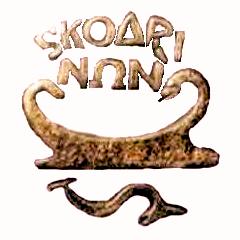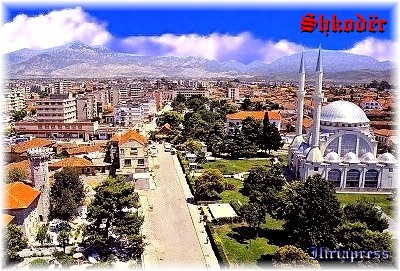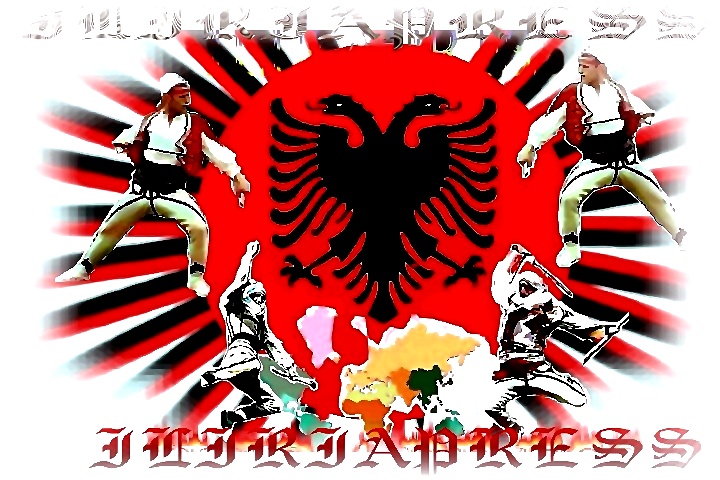  |
 |
 |
 |
|
SHKODRA
|
 |
|
SHKODRA | History of Shkodra | City of Shkodra
|
 |
|
Photo Galery of Shkodra

|
| Shkodra |
The city of Shkodra stands out as a brilliant diamond in northwest of Albania. Built since ancient time on the coast of the lake Shkodra between two rivers, Drini and Buna, Shkodra is the third largest city in Albania. The city is a host of 110 000 people, and the surrounding
villages bust the population to 131 000 people. The entire population speaks fluently the Albanian language. People of Shkodra
are peasants that for centuries have practiced the valor and the dignity of life in this region. The citizens of Shkodra are
people with a strong moral. Since ancient time, they facilitated the mutual respect based on canon laws. They lived free with
respect to equal rights. In mutual cooperation, they share and solve any issue in the life.
They helped each others in need and found balance within the constraint of their abilities to be proud and happy. Thousands old tradition of religious tolerance resulted into prosperity and growth.
The Mosques and Catholic and Orthodox churches are standing in close proximity to each
other. There was never one appeal, but
a perfect faith reposed for mutual respect as the strongest proofs that lead the city of Shkodra to become the economic and trading center of northern Albania and western Balkans. The people of Shkodra, known
as "Shkodrans" are well-known for their sense of humor.
The city of Shkodra is known for cultural achievements. The city is the
birthplace of the noble figures such as Marin Barleti, Pashko Vasa, Gjergj Fishta, Kasem Taipi, Kol Kamsi, Zef Jubani, Kol
Idromeno, Martin Camaj, Lazer Shantoja, Ndre Mjeda, Filip Shiroka, and others. Albanian people inherit from this city one of the most precious literature from the
Middle Age. The book of Gjon Buzuku, "Meshari", is considered to be the first book written in Albanian language in 1555. The first Albanian newspapers and publications
printed in Albania came out of the printing press of Shkodra. Shkodra
was the seat of the Catholic archiepiscopacy and had a number of religious schools. The first laic school was opened in Shkodra.
The Catholic Church used the Latin language and held the common culture all over the countries. The leaders of Shkodra succeeded
in keeping foreign aspirants at a distance, and kept the native Albanian traditions and heritage. The crises of the Roman Catholic church, especially the controversy over the French Avignon Papacy and the Great Schism, along with the catastrophic effects of the Black Death, led to a re-evaluation of medieval Albanian values. At this time, the city
benefited
materially and culturally from this sea-change in social consciousness. The city is often considered the birthplace of
the Albanian Renaissance and was long ruled by the feudal lords.
As a result of various activities, Shkodra is also famous for its magnificent art and architecture. In the diamond shapped city, the 90 cultural and historical monuments make
the city to be the cultural capital of
Albania. The most prominent cultural monuments are: the Museum of the City, the Rozafa Castle, the Lead Mosque, the Turkish Bath or hamam, the Large Church which is the largest church in the Balkans, Mes Bridge, and the Migjeni Theater. The Bushati Library built
during the 1840s. The Marubi museum of photography is a symbol of Albanian photography which left behind over 150,000 negatives
describing the Albanian cities during the end of the 19th and the beginning of the 20th century. In addition, the photographs
are true memoirs from the period of the rise of the Albanian flag in Vlora to the life of Albanian people during the Albanian
liberation movement. The city is the host of the numerous museums such as the Museum of History,
the Museum of Education, the House of the Shkodra Branch of the League of Prizren and other. There is the University "Luigj Gurakuqi” with the faculties of Economics, Jurisprudence, Philology,
History, Geography, Biology and Chemistry, Mathematics and Physics, and the College of Teacher Training. It is the only University in Northern Albania.
The main university library has over 250,000 titles. As the Cultural Center, Shkodra is hometown of various civil associations such as the Artists
and Writers Association, the Art Gallery, and various sport associations.
|
|
|
Shkodra has mild climate. It is mediterranea with interferance of kontinental climate. The average yearly temperature varies from 7.5C to 14.8C in the city of Shkodra. The temperature in January ranges from -2.7C to 5C,
and in July the temperature vary from 17 to 24.6C. The average yearly rainfall is about 2000 mm, one of highest in Albania. Due to mild whether factors, the growth of rich vegetations
has influenced more then 1,700 species. Nearly 30% of the surface is occupied by forests, mostly pine trees and beach forests.
The
city of Shkodra is the wealthiest city in Albania. It is rich not only in historical and cultural monuments
which created numerous small businesses and enterprises, but in natural resources. Shkodra and vicinity is known as mining
area. The copper mine “Palaj Karme” employees a large number of miners. Its reserves are estimated to be 1 million
tons. The titan mine in Ungre is known for the titanoilment. In addition, silica, boxide, dolomite, riolite, and other minerals
can be found in the area. Shkodra is the main economical muscle for the northern part of Albania. The mechanical and electronic industries are the
most developed, proceedings are the food and building materials industries. Some of the major manufacturing facilities are
electric wires and cables, cement, building materials, wood processing plants, processing of leather, textiles and clothing,
tobacco, and food. On the Drini River, two hydro power plants operate successfully. The power plant of Vaut
and Komanit provide the electrical power for the people of Shkodra and vicinity. The vicinity of Shkodra is full of fertile
soil where the private Albanian farms cultivate and produce the best agriculture products in Balkans. While rivers like Drini,
Buna, Kiri, Shala, and Gemi with their emerald waters are visited by numerous fishermen in summer time, the blue Lake Shkodra offers the best fish in Balkans. The Albanian Alps more or less are covered with a significant floral carpet full
of chamois, deer, lynx, wolves, bears, rabbits, and other wild animals. This whole region is an exceptional hunting ground. Shkodra is industrial and a trading center for Albania.
Shkodra is a diamond in the rough with plenty of potential. Starting
with deep blue Lake Shkodra with the sand beaches, the Albanian Alps, the Rozafata Castle, and three rivers, Drini, Kiri,
and Buna, directing the waters toward Adratic sea, Shkodra is a beautiful city in a beautiful part of Albania. It takes a short trip of 30km to Velipoja beaches on Adriatic Sea. Shkodra lies on southern part of the plain of Mbishkodra on the banks
of the rivers, Drini and Buna, and surrounded by the mountain of Tarabosh, and Albanian Alps. Rich in hydrography, Shkodra is a beautiful city in a beautiful part of Albania. The city lies next
to the biggest lake in Balkan
Peninsula, lake Shkodra, and the residents use to beach at Shiroka for recreation. It creates timeless grace that blends colour of love perfectly
in harmony with the environment. There are enough attractive places to have fun. The three surrounding towns have joined Shkodra.
The town of Shiroka, the town of Zogaj, and the town of Bahchellaku make the city to be a metropolitan of northern Albania. It takes a short trip of 30km to Velipoja beaches on Adriatic Sea. Shkodra is a diamond in the rough with plenty of atractive touristic centers. In the northwestern part of the city, the Albanian
Alps with their 2600m pikes of Tethi and Bogy are the hiking and skiing centers of Albania.
The city features a remarkable Illyrian or native Albanian architecture combined with Islamic
and Venetians characteristics in a background of extreme beauty enhanced by snow-capped Albanian Alps, millenary forests,
spectacular waterfalls, emerald-water of rivers Drini and Buna, and the azure
lake Shkodra. The massive graceful minaret and enormous domes, fitted harmoniously within gigantic proportions, as the decadent
collection of art represent the city as the cultural capital of Albania with an Albanian imperial air about it. The glorious Large Church stands strong as a symbol of Christianity. Even though
a large part of the city has been transformed after World War II with straight wide streets and tall residential and public
buildings, the city retained its characteristic appearance with narrow streets and tall stone walls on both sides, and tall
gates. The city expanded with several new quarters, and the industrial zone was built north of the city. The city hall reminds
that the city used to be a trading center, and it was decorated by the English Lord Paget.
The city has established administrative courts, post offices, educational institutions since 1718. Many countries had
their consulate and other diplomatic offices in the city. Even though this city was damaged during the communist era, Shkodra
still remains an interesting city.
|
 |
|
ILIRIAPRESS
|
 |
|

|
|
|
